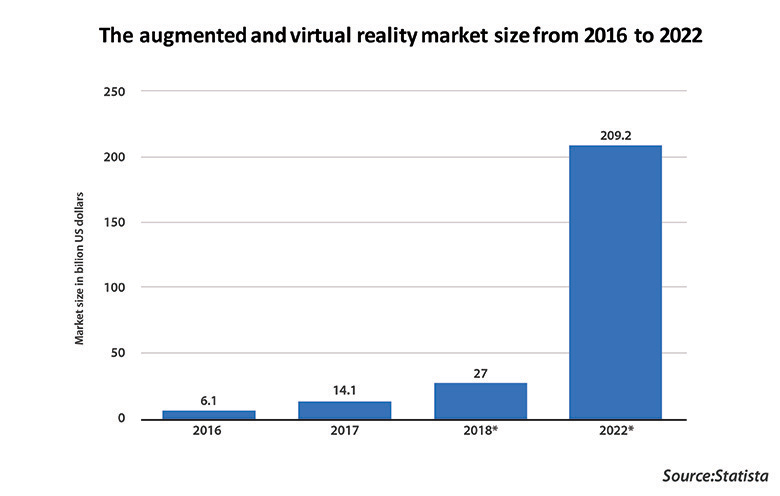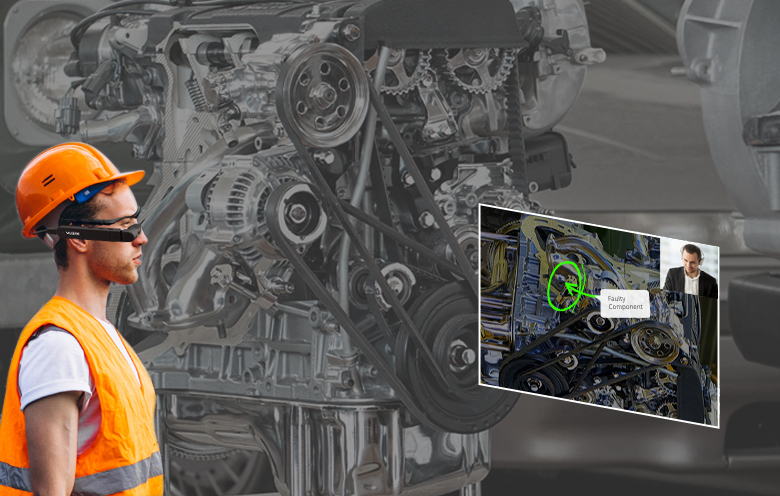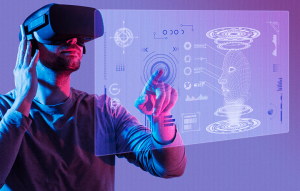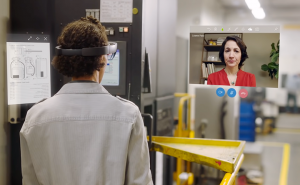We all know that customer satisfaction is essential for business growth. And for companies that provide after-sales services’, delivering amazing customer service is one of the best ways to achieve it. But to deliver great customer service, you require the finest field service abilities as well. This makes field service management crucial. The traditional ways of field service management consume a lot of time. But with the advent of recent technologies like augmented reality (AR) and the Internet of Things (IoT), the conventional practices of field service are changing.
The use of augmented reality field service applications substitutes huge operator manuals and handheld devices with better user experience and hands-free operation capabilities. This is because these devices make necessary information easily accessible as and when required. AR-based wearable devices increase technicians’ efficiencies in providing field services.
Let’s look at a few features and benefits of augmented reality in field service management
Features of augmented reality for field service
Hands-free experience
AR wearable devices enable technicians to operate hands-free so that a technician doesn’t have to hold a phone/tablet in one hand and a screwdriver in the other to repair equipment or resolve an issue.
Access to procedures
Employee training is critical for any business that values a competent workforce capable of following procedures and processes efficiently. Unfortunately, employee training can be costly and may require more time to train new employees. This reduces a company’s ability to respond to staff shortages and skill gaps. The implementation of augmented reality (AR) in on-job training programs will help companies in quick development of skills and better retention of training information. This in turn will make the workforce proficient at handling their job roles better.
- Errors in price calculation due to multiple pricing models, discount management, etc.
- Unreliable and unrealistic traditional processes lead to weeks of back-and-forth.
- Lack of collaboration between the client and the production or engineering department.
- Other challenges include a longer quote-to-order cycle, eroding profit margins and error-prone orders.
Product assembly & disassembly
The use of augmented reality wearable simplifies the complex process of assembly and disassembly of parts. Detailed information can be provided to the technician in a graphical form for easy and quick understanding of a complicated assembly process. This can provide step-by-step directions via an AR headset for quicker resolution.
Projected from the year 2017 to the year 2025, augmented reality is expected to progress from USD 3.5 billion to USD 198 billion. – Statista
Displays real-time data
AR helps a field service technician to view real-time data of the equipment for servicing, remote collaboration and support from an expert. This helps in the timely resolution of problems.
Remote troubleshooting
AR is speeding up the process of troubleshooting. It helps in diagnosing the problems in lesser time. And when a technician requires some help, a senior can easily provide it over a live video from a distant location.
An AR content library can also be built to provide all the important repair data through the AR platform. This will help the technician to understand the issues quickly, minimize error rates, eliminate downtime and reduce operational costs to a great extent.
Remote inspections
AR wearable devices enable a technician to easily find errors and maintenance issues by viewing a customer’s equipment via an AR headset. The technician can also view step-by-step instructions with diagrams overlaid on the equipment’s image. This simplifies the field service technician’s job with better productivity, proper diagnoses and higher first-time fix rates.
Forecasted augmented reality (AR) and virtual reality (VR) market size worldwide from 2016 to 2023 (in billion U.S. dollars)

Benefits of augmented reality for field service
Reduced truck rolls
Sending a technician to a client site to diagnose and repair equipment requires time and involves a cost. And when a technician is sent across the city or overseas, it also incurs travel expenses. This type of visit is known as truck rolls. There are also fuel expenses, vehicle purchase costs and maintenance costs of vehicles for the service providers who roll trucks for field service. When all these costs are combined, it comes to be a huge cost to the company.
These costs can be reduced by incorporating an AR system to provide support to customers. The field service technician gets to take service calls and guides the customer in fixing issues via video stream without having to travel to the customer’s site.
Reduced training time and cost
A field service AR system helps in accumulating useful information by recording every service call. This way it captures the skills and knowledge of the most experienced technicians and engineers and provides a great source of training for the new technicians in the future.
The implementation of an augmented reality solution allows real-time association between a technician and an expert in providing instructions in complex situations. For example, when a new technician is sent to a customer’s site, an experienced technician can guide him from the office. This augmented reality remote assistance will provide quick training for new technicians and save time for the experienced ones.
Getting such an experience is valuable for a new technician. Moreover, leveraging an AR system incurs less cost when compared to the cost of sending both technicians to the client site.
Reduced equipment downtime
Providing visual instructions to customers via field service AR system for making repairs can prevent the travel delay which happens when a technician is sent to visit a client site. This reduces the turnaround time as well as equipment downtime significantly.
Reduced software costs
A field service AR system can be incorporated as a cloud-hosted solution. A SaaS field service AR solution on an end-to-end cloud-based platform will help to minimize the setup costs and remove IT infrastructure costs. It also helps to use a subscription model in place of up-front licensing costs.
Enhances technicians’ capabilities
The data collected by IoT sensors integrated into a customer’s equipment helps a technician to prepare well for the times when a site visit becomes inevitable. The technician gets an idea of the required tools and parts and can gather them beforehand. This increases the efficiency of a technician to fix an issue in the first go. It also helps them to navigate the customer’s multi-asset environment easily.
Final thoughts
Augmented reality is a rapidly growing technology. We can foresee its fast development and evolution because of the huge benefits that the technology beholds. But before you start deploying the technology, you must understand the expected benefits, costs and risks as well. To know more about augmented reality in the field service industry, talk to our experts.









